Since the main topic in this blog is Architecture we will now talk about Architecture in Morocco .
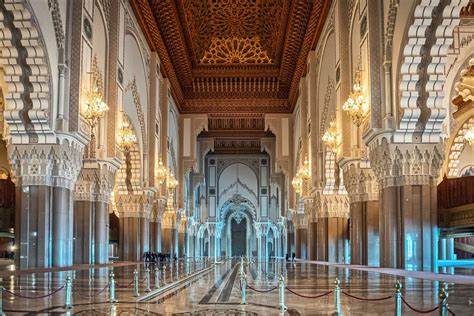
Morocco has been affected by different cultures over the years as a result of its distinctive geographic location. For many years, a combination of African tribes from the other side of the Sahara Desert, Islamic customs from the Arab neighbors, and European invaders produced the nation. Nowhere is this more evident than in the nation’s distinctive architectural style, which showcases how all of these influences have combined to produce a culture unlike any other.
Morocco’s buildings feature a variety of design aspects today, although Islam has had a significant historical and contemporary influence on the nation’s architecture. In fact, the construction and embellishment of structures in Morocco have been governed for centuries by the special decoration laws of Islam.
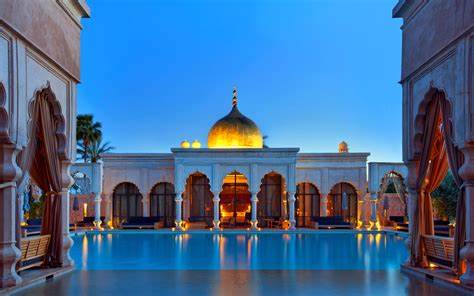
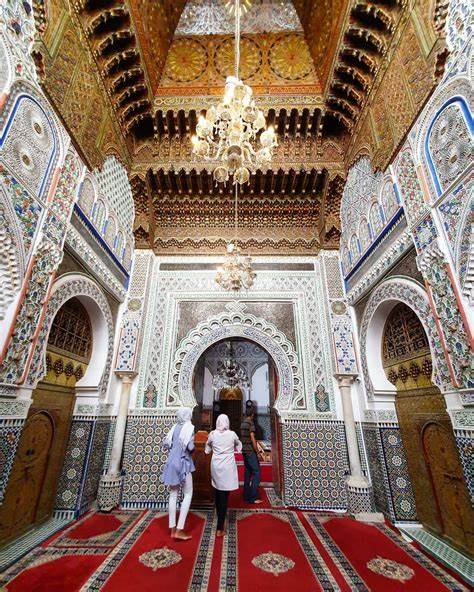
The Hispano-Moorish architectural style, which is typical of North Africa and the Iberian Peninsula, also established roots in Morocco during the Almoravid era in addition to the Islamic influence. Today, the majority of the buildings in the nation combine these two distinct architectural forms.
It can be overwhelming to comprehend the enormous diversity of structures in Morocco and their numerous architectural components and styles, so I’ll show you some photographs of architecture immediately.




And also i will show you Cristiano Ronaldo’s Hotel in Marrakech


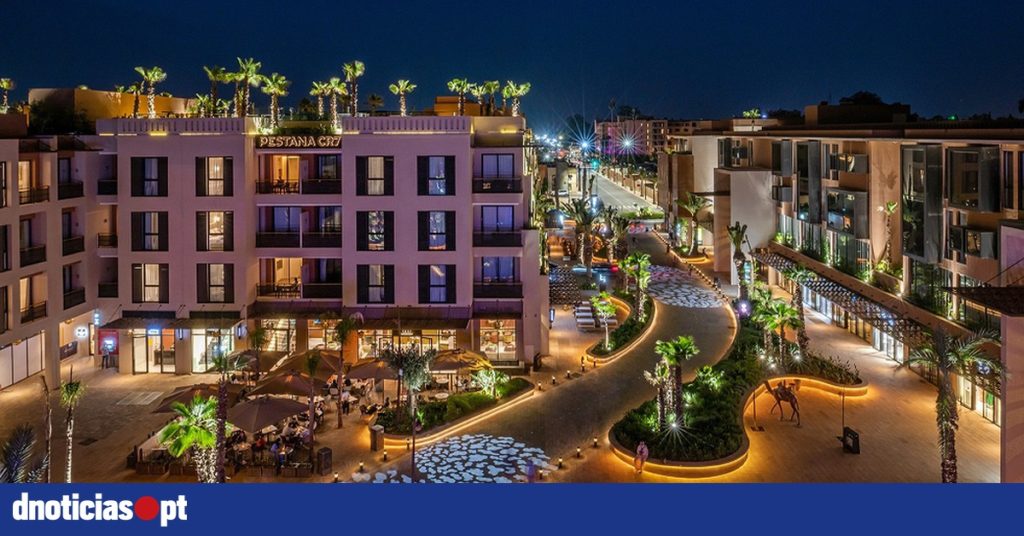
Morocco is sometimes said to be a nation of charm, mystery, and beauty, and its distinctive architecture undoubtedly plays a part in these descriptions. The majority of the nation’s artistic heritage has persisted up to the present day despite its occasionally violent history , Moroccan architecture stands out for its extraordinary fusion of many design elements as well as the distinctive characteristics of each of its historic structures. Morocco is home to a variety of structures, including mosques, riads, souks, ramparts, kasbahs, palaces, and medersas, all of which have distinct functions and feature distinctive architectural styles. Some of these will be discussed below.
Mosques



The most significant buildings in Morocco, in my opinion, are mosques. There is always at least one mosque with a towering minaret in every city, hamlet, or town, no matter how tiny. It is understandable why tourists believe Moroccan mosques to be the pinnacle of Moroccan architecture. Moroccan mosques have walls and fountains coated in green and white zellij, as well as a magnificently decorated mirhab (a niche showing the direction to Mecca) in stucco and marble. Visit Fez, especially the Al-Qarawiyyin Mosque, for some of the most stunning specimens of Moroccan mosques. Remember that the two mosques allowed to non-Muslim visitors are Hassan II Mosque in Casablanca and Tin Mal Mosque in the remote High Atlas Mountains.
Riads



Riads are the name for traditional Moroccan houses and palaces. They were designed as private dwellings with privacy in mind. They are inwards directed, with a courtyard in the middle, allowing for both family seclusion and weather protection in Morocco. All of the rooms have windows that exclusively face the courtyard and open to it. Orange or lemon trees and fountains are common decorations for courtyards. The riad may be embellished with exquisite zellij and stucco work depending on the family’s wealth. In Marrakesh and Essaouira, numerous historic riads have undergone recent renovations, and many of them are now used as hotels and restaurants.
Medersas
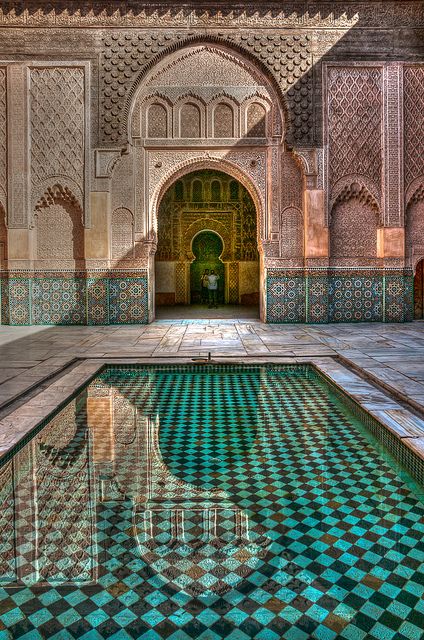
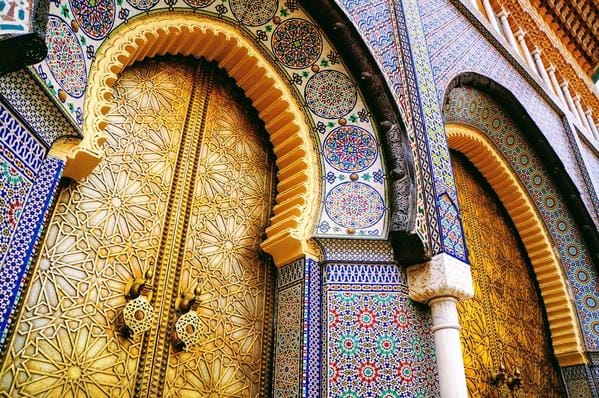

Merdersas were actual thriving centers for the study of law, philosophy, and astrology, not merely places to learn about religion. Their distinctive architectural style depicts a stark contrast between the students’ relatively modest and plain wooden dorm rooms and the enormous central courtyard that is lined with gorgeously carved arches with intricate stucco work. The mosque, which was housed within the tall school walls, would likewise be gorgeously ornamented with elaborate geometric patterns and sweeping Islamic calligraphy on gleaming green and white zellij. It is challenging to comprehend the great contrast in décor in these schools, so be sure to visit Medersa Bou Inania in Fez for one of the best examples in the nation.